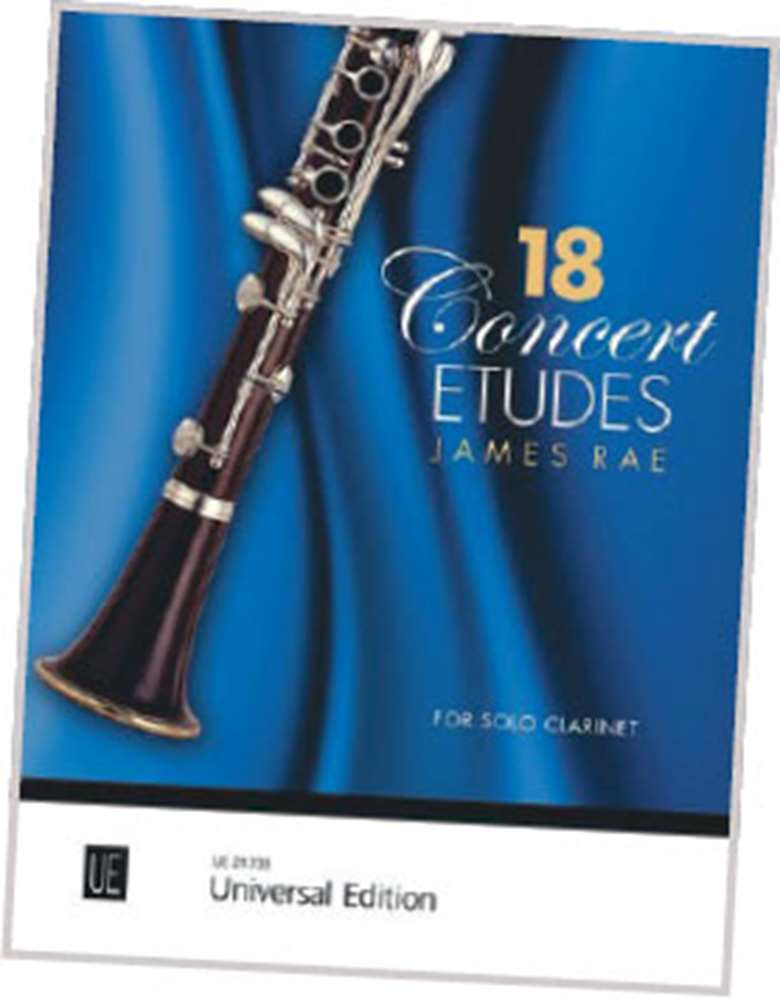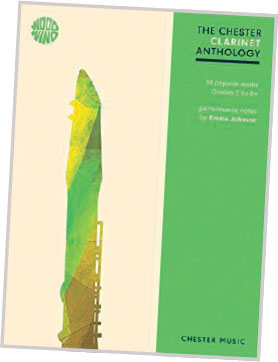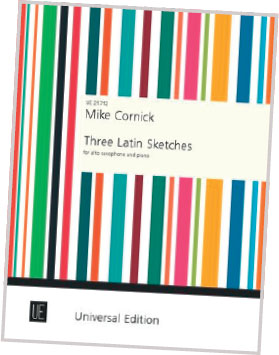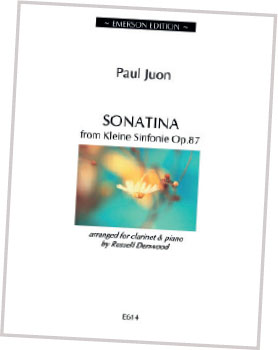Clarinet Sheet Music Reviews: Beginner to advanced
Paul Saunders
Thursday, February 1, 2018
Paul Saunders reviews four books for beginner to advanced clarinet players.

18 CONCERT ETUDES
James Rae, Universal Edition, £14.20
Rarely do such differing styles exist in the same book (except in Rae's other collections) and frankly, it's about time they did. The clarinet is perhaps the most versatile of all the woodwind instruments and is equally at home in all the styles represented in these études. They are aimed at the advancing clarinettist (Grade 6 and above) and there isn't a weak one among them. Playing them through I especially enjoyed ‘Ragtime’ and ‘Funky!’, both lovely examples of Rae's fabulous understanding of the instrument's capabilities.
My only reservation is that, with this book aimed at advancing players, it may have been beneficial to include some performance tips from the composer on each study. For example, rags are played with straight quavers and although teachers will know this, it's conceivable that the inexperienced student might attempt a jazz-quaver version, leading to problems. Also, the lip-up and note-bends in ‘Funky!’ could do with some explanation as these techniques may not have been encountered. Some recommended listening to give the player some context might be a way round this: not a criticism but a suggestion, as I genuinely loved playing through this book.
The classical-based studies are melodically interesting and ‘Vivo’ and ‘Veloce’ especially are complex enough to make this book worth buying. I have no hesitation recommending it.
THE CHESTER CLARINET ANTHOLOGY
Performance notes by Emma Johnson, Chester Music, £19.99

This book is a gem. Some of my all-time favourite pieces are in here – the slow movement of Poulenc's Sonata, the first of Saint-Saëns’ and the first of the Horowitz Sonatine. All three are required reading for any clarinettist and are nothing short of masterpieces in their own right, but there's much more: another 11 pieces, including Stravinsky, Dankworth and Stanford.
Many of the pieces are on existing exam syllabuses, have been for a long time, and rightly so, as they are superb. Every clarinettist needs the music in this book: an essential library for any player who is beginning to explore the repertoire. And as an added bonus, Emma Johnson has provided some insight and background information for each of the pieces to get you going. A fabulous book – highly recommended.
THREE LATIN SKETCHES FOR ALTO SAXOPHONE AND PIANO
Mike Cornick, Universal Editions, £15

Composed for Mark Walton, these three pieces, featuring catchy rhythms, are a joy to play. Easily grasped by a player of Grade 5 standard, the strong stylistic writing will leap off the page and transform into enjoyable performances. This is aided by the piano parts, which are approachable with well thought-out chord voicings. Often the pianist has to perform miracles to get from one ill-thought splodge to another, but I'm happy to say that this is not the case.
Both parts are articulated correctly and when player and accompanist match, the pieces sparkle with life. The three work well as a set but could quite easily be played on their own as an item in a school concert. Immense fun and a valuable addition to any Grade 5 player's repertoire.
SONATINE FROM KLEINE SINFONIE, OP.87 FOR CLARINET AND PIANO
Paul Juon, arr. Russell Denwood, Emerson Edition, £10.95

I had never heard of Paul Juon before this arrangement of his Kleine Sinfonie arrived, and I'm pleased to say it has been a real treat playing it. Juon is apparently enjoying a resurgence in popularity and I can understand why. A contemporary of Schoenberg, the Russian composer's work is written in a late-romantic style, utilising gorgeous harmonies and soaring melodies. Denwood's arrangement of this piece is excellent.
The first movement is breath-taking, providing the clarinettist with opportunity to demonstrate the instrument's clarino register. By contrast, the second movement is a jolly affair that relies more on unison playing, until the haunting middle E? minor section offers a fabulous contrast. The slow movement is an absolute gift, with long melodic lines, seemingly never-ending diminuendos and a few solo bars. The final movement is more classical and the clarinet is perfectly placed to lead this melody in the register it is placed. Not being familiar with the original, I imagine the clarinet has been given the first violin part, which in this case works brilliantly.
This piece would suit any student embarking on learning how to interpret phrases, or as a precursor to learning some of the beautiful compositions by Brahms.

